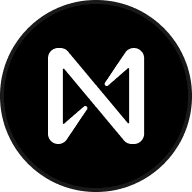Cena Near Protocol
w USDInformacje o Near Protocol

Zastrzeżenie
OKX nie udziela rekomendacji dotyczących inwestycji ani aktywów. Musisz dokładnie rozważyć, czy handel lub posiadanie aktywów cyfrowych jest dla Ciebie odpowiednie w świetle Twojej sytuacji finansowej. W przypadku pytań dotyczących konkretnej sytuacji skonsultuj się ze swoim doradcą prawnym, podatkowym lub specjalistą ds. inwestycji. Aby uzyskać więcej informacji, zapoznaj się z warunkami użytkowania i ostrzeżeniem o ryzyku. Korzystając z witryny internetowej strony trzeciej („TWP”), akceptujesz, że wszelkie korzystanie z TPW będzie podlegać warunkom TPW i będzie regulowane przez te warunki. O ile nie zostało to wyraźnie określone na piśmie, OKX i jego podmioty stowarzyszone („OKX”) nie są w żaden sposób powiązane z właścicielem lub operatorem TPW. Zgadzasz się, że OKX nie ponosi odpowiedzialności za jakiekolwiek straty, szkody i inne konsekwencje wynikające z korzystania z TPW. Pamiętaj, że korzystanie z TPW może spowodować utratę lub zmniejszenie Twoich aktywów. Produkt może nie być dostępny we wszystkich jurysdykcjach.
Wydajność ceny Near Protocol
Przewodniki

Utwórz bezpłatne konto OKX.
Zasil swoje konto.
Wybierz swoją kryptowalutę.
Najczęściej zadawane pytania Near Protocol
Pogłąb wiedzę o Near Protocol
In 2020, the decentralized finance (DeFi) sector saw significant growth, leading to a surge of decentralized applications (dApps) on the Ethereum network. This surge underscored some of Ethereum's scalability challenges, pointing to the necessity for a more robust solution. Responding to this need, Near Protocol emerged as a community-oriented cloud computing platform aiming to mitigate these constraints.
What is Near Protocol
NEAR is a community-driven cloud computing platform that adopts the Proof of Stake (PoS) consensus mechanism. With its user-friendly interface and smart contract capabilities, NEAR seeks to empower developers to effortlessly design and deploy innovative dApps and DeFi solutions. Furthermore, its unique design allows users to engage with dApps and smart contracts without requiring a wallet.
The Near Protocol team
Erik Trautman, an entrepreneur boasting Wall Street experience and founder of Viking Education, pioneered NEAR. Alongside him are co-founders Illia Polusukhin, a former Google employee, and Alexander Skidanov, an ex-Microsoft staffer. Under their leadership, NEAR has amassed a skilled cohort of developers, featuring International Collegiate Programming Contest gold medalists.
How does Near Protocol work
Utilizing sharding technology, NEAR improves transaction speed and volume. By distributing its computational load across multiple shards, each node runs only the relevant code for its assigned shard, optimizing scalability. NEAR's Blockchain Operating System (BOS), grounded in JavaScript, ensures developers can use a familiar programming language. The platform provides ready-made components, facilitating quicker product development. Moreover, users can swiftly access the system without needing to own or use cryptocurrency.
NEAR tokenomics
NEAR's native token, NEAR, was launched on October 13, 2020, with a total supply of 1 billion tokens. The token offers several use cases, from paying transaction gas fees to staking for rewards. Additionally, it plays a role in governance, data storage, and access to services and applications on the Near Protocol.
NEAR distribution
NEAR was distributed in the following way:
- 17.2 percent: Community grants and programs
- 15.23 percent: Seed round
- 14 percent: Core contributors
- 11.76 percent: Early ecosystem development
- 11.4 percent: Operation grants
- 12 percent: Community sales
- 10 percent: Foundation
- 8.41 percent: Venture round
Near Protocol: The road ahead
Created for robustness and efficiency, NEAR offers a platform free from intermediaries, permitting users to independently publish and host applications. This commitment to progress is reflected in their Q3 2023 announcement, heralding phase 2 of sharding to enhance the sharding process and improve scalability.






























